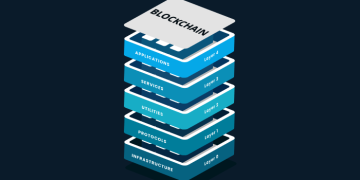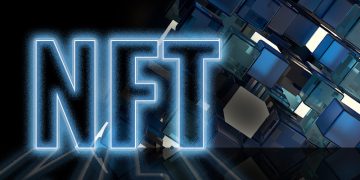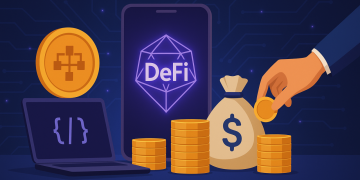Smart contracts have emerged as one of the most revolutionary aspects of blockchain technology, enabling self-executing contracts that automatically enforce the terms of an agreement without the need for intermediaries. They are particularly prominent in decentralized finance (DeFi) applications and platforms such as Ethereum.
While smart contracts offer transparency, efficiency, and security, they are not immune to vulnerabilities. Poorly written smart contracts can expose users to significant financial loss, fraud, and exploitation. In this article, we will explore the most common security vulnerabilities found in smart contracts, along with real-world examples, and best practices to avoid them.
1. Reentrancy Attacks
What is a Reentrancy Attack?
A reentrancy attack occurs when a smart contract calls an external contract, and that external contract makes a recursive call back into the original contract before the initial execution completes. This can allow an attacker to withdraw more funds than they should, exploiting the contract’s failure to properly handle state changes before calling external functions.
In simpler terms, an attacker can repeatedly withdraw funds from a contract, taking advantage of the contract’s failure to update its balance before calling another function.
Real-World Example: The DAO Hack (2016)
One of the most infamous examples of a reentrancy attack was the DAO hack in 2016. The attacker exploited a reentrancy vulnerability in the DAO’s smart contract to repeatedly withdraw Ether, eventually draining $50 million worth of funds from the platform.
How to Prevent Reentrancy Attacks
- Checks-Effects-Interactions Pattern: Always update the contract’s state variables (such as balances) before making external calls. This prevents an attacker from manipulating the contract’s state while interacting with external contracts.
- Use
transferInstead ofcall: Thetransferfunction in Solidity forwards a fixed amount of gas, reducing the possibility of recursive calls. Avoid usingcall()unless absolutely necessary. - Reentrancy Guard: Implement a “mutex” (mutual exclusion) or lock mechanism to prevent recursive calls. A common implementation is the ReentrancyGuard pattern, which sets a flag to block further interactions during execution.
2. Integer Overflow and Underflow
What is Integer Overflow/Underflow?
An integer overflow occurs when a number exceeds the maximum value that can be stored by a variable. Conversely, an underflow happens when a number goes below the minimum value allowed for a variable. These bugs can lead to unexpected behavior in smart contracts, such as funds being transferred unexpectedly or malicious manipulation of contract logic.
In Solidity (the most popular smart contract language), uint256 variables are often used for handling large numbers, but if not properly validated, these numbers can overflow or underflow.
Real-World Example: The “Parity Wallet” Hack
In 2017, the Parity wallet hack was triggered by an integer overflow vulnerability in the smart contract. This exploit led to the freezing of over $160 million in Ether, as attackers exploited the vulnerability in the contract to lock up users’ funds.
How to Prevent Integer Overflow/Underflow
- Use Safe Math Libraries: Solidity provides SafeMath libraries that prevent integer overflow and underflow by ensuring that any arithmetic operation (addition, subtraction, multiplication, division) is within the valid range.
- Built-in Overflow Protection: In Solidity versions 0.8.x and later, overflow and underflow checks are automatically enforced, so it’s important to ensure you’re using an up-to-date version of Solidity.
3. Uninitialized Storage Pointers
What is an Uninitialized Storage Pointer?
When smart contract developers fail to properly initialize storage pointers, the contract can reference memory that has not been assigned, leading to unexpected behavior or the exposure of sensitive data. In some cases, this can result in attackers manipulating the state of the contract or gaining unauthorized access to critical contract data.
For example, a contract might initialize an array or mapping variable but fail to set a specific element or key, leaving it accessible to manipulation.
Real-World Example: Uninitialized Variables in ERC-20 Tokens
In earlier versions of the ERC-20 token standard, some contracts were vulnerable to uninitialized storage variables, leading to incorrect balance updates and potential fund theft.
How to Prevent Uninitialized Storage Pointers
- Initialize All Variables: Always initialize your variables explicitly when declaring them. Solidity allows developers to declare variables in storage (such as arrays and mappings), but they must always be properly initialized before they are accessed.
- Use
require()Statements: Add explicit validation checks usingrequire()to ensure that variables are properly initialized before they are used in critical operations.
4. Access Control Vulnerabilities
What is an Access Control Vulnerability?
Access control vulnerabilities arise when smart contracts fail to properly restrict access to certain functions. If attackers can gain unauthorized access to functions or data within the contract, they can manipulate the contract’s logic, transfer funds, or execute other malicious actions.
For example, if a contract allows anyone to call a function that is intended to be only callable by the contract owner or a privileged address, it can lead to unauthorized actions, such as token theft or fund draining.
Real-World Example: Parity Multisig Wallet Bug
In 2017, a vulnerability in the Parity Multisig Wallet was exploited by a hacker who gained control of the contract’s owner functions and ultimately froze over $160 million in assets.
How to Prevent Access Control Vulnerabilities
- Role-Based Access Control (RBAC): Use access control mechanisms, such as Ownable, AccessControl, or Role-based Access Control, to limit who can execute sensitive contract functions.
- Require Specific Addresses for Critical Operations: Use
require()statements to ensure that only authorized addresses or roles can perform privileged actions.
5. Gas Limit and Block Size Manipulation
What is Gas Limit and Block Size Manipulation?
Smart contracts depend on gas to execute operations on the blockchain. If a contract consumes more gas than the set gas limit, the transaction will fail. However, if an attacker is able to manipulate the gas consumption, they could make a contract either fail unexpectedly or execute malicious logic in an unintended way.
- Block size: If a contract tries to process too many operations in a single transaction, it could exceed the block size limit, leading to transaction failure.
Real-World Example: Gas Limit Exploit in DeFi Protocols
Several DeFi protocols have been exploited due to mismanagement of gas limits or unoptimized code that caused transactions to fail or allow an attacker to manipulate the gas cost.
How to Prevent Gas Limit Issues
- Optimize Contract Logic: Write efficient smart contract code that minimizes gas usage. Avoid unnecessary loops, and ensure functions are optimized to execute quickly.
- Limit Complex Operations: Break up complex functions into multiple transactions if needed to avoid hitting gas limits or block size constraints.

6. Front-running and Transaction Ordering Dependence (TOD)
What is Front-running?
Front-running occurs when an attacker gets early knowledge of a transaction and executes a similar one before the original transaction is confirmed. This is particularly relevant in decentralized exchanges (DEXs) or automated market maker (AMM) systems where users may try to gain an advantage by reordering transactions.
An attacker might manipulate the ordering of transactions in a way that allows them to profit from knowledge of a pending transaction (e.g., placing a buy or sell order before the original order goes through).
Real-World Example: Front-running in DEXs
In decentralized exchanges like Uniswap or SushiSwap, attackers have been known to front-run trades by seeing pending transactions in the mempool (the pool of unconfirmed transactions) and executing their own transaction with a higher gas fee to get ahead of the original trade.
How to Prevent Front-running
- Commit-Reveal Schemes: Implement commit-reveal schemes, where the details of the transaction (such as the price) are not visible to other users until after a specific time period.
- Transaction Ordering and Priority Fees: Some DeFi protocols have introduced priority fee structures to counter front-running by making it more expensive for attackers to exploit transaction ordering.
- Slippage Protection: Set slippage limits to prevent large changes in price during trade execution.
7. Poor Randomness Generation
What is Poor Randomness?
Smart contracts sometimes require random numbers for things like generating tokens, choosing winners in a lottery, or assigning tasks. However, the Ethereum blockchain (and many others) lacks a truly secure method for generating random numbers. If developers rely on predictable methods (like using block hashes), attackers can predict the outcome and manipulate the contract.
Real-World Example: Lotteries and NFT Raffles
Many NFT projects and lottery systems rely on pseudo-randomness for selecting winners. However, using blockhash or timestamp values for random number generation has been shown to be easily manipulable by miners or attackers.
How to Prevent Poor Randomness
- Use Chainlink VRF: For secure random number generation, use oracles like Chainlink VRF (Verifiable Random Function), which ensures true randomness that is auditable.
- Commitment and Reveal: To mitigate risks, implement a commitment-reveal scheme where the random number is “committed” to a contract before the actual event occurs.
Conclusion
While smart contracts offer revolutionary potential in automating and securing financial transactions, they are not free from security risks. Developers must remain vigilant and adopt best practices, such as using established security libraries, implementing proper access controls, and conducting regular audits, to mitigate vulnerabilities.
As the smart contract ecosystem continues to grow, improving both the security tools and the standards for writing secure contracts is essential to ensuring that this transformative technology can be used safely and effectively.

















































